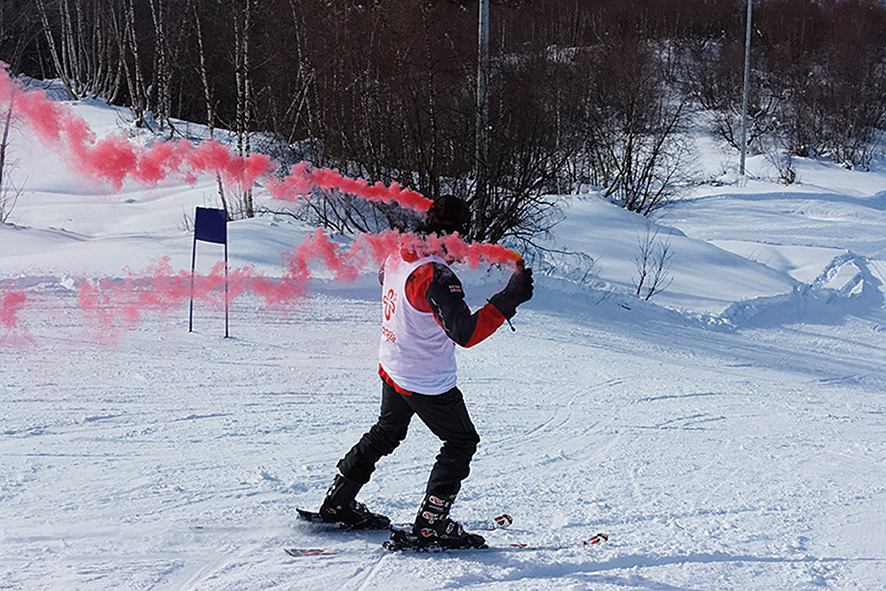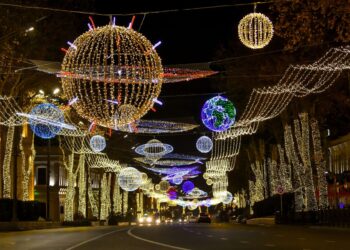Georgia’s fall colors are yet in full glory as I write this, but snow is hard on their heels in the highlands…wind will bring all those leaves down, to carpet the ground. This is my least favorite time of year, because it looks the most dead to me; mostly brown. Then proper snow will eventually cover everything, bit by bit. Almost all color will disappear, leaving bare tree trunks and branches and mountains. The main palette will indeed shift to monochrome. But in this, too, there is great beauty. I hardly use color at all in my winter photographs, sticking to pure black and white without the distraction of all the hues which characterize the other three seasons. We are left with form, tones, and the need for more careful pictorial compositions; and a tendency towards minimalism too. It needs a shift in approach. I welcome it.
For the driver, conditions can be quite different too. It was recently announced that for certain designated mountain roads in Georgia in winter, snow tires and/or chains will become a requirement should conditions mandate them. This is something North Americans are used to in mountainous areas too. It can force drivers to adapt to local conditions and cut down on accidents and the need for rescues. I remember this difference snow tires made on my previous vehicle, a Toyota 4Runner, in Svaneti. Using them, I did not need chains even once, which was a huge relief, as chains are frustrating to put on (the temporary plastic ones are simply a waste of time and money: I have seen them break on friends’ tires during a first use more than once. Plastic gets too brittle in the cold, generally, for such forceful use).

My winter driving experience in Upper Svaneti showed me that the road clearing still leaves some snow on the road surface. Before long, the weight of car tires on this turns it to ice; so you have to be much more careful, slow and watchful. It can be learned, but practice is always a good idea, as well as factoring in much more time than clean-road driving would allow. It was a statistical fact in Edmonton, Canada, when I lived there, that the onset of winter always brought more accidents, as young drivers had their first such experience and everyone else had to adapt to the seasonal conditions. Then things would stabilize. If you are leery of your vehicle’s capabilities here, or your own, you can always hire a driver with their own 4×4 and leave the work to them.
As for sports… hiking in the highlands gives way to snowshoeing, cross-country skiing, and the downhill sports, including skiing, snowboarding and snowmobiling.
Georgia has three principal winter sports areas: Bakuriani and Gudauri, both several hours’ drive from Tbilisi, and Svaneti (both Hatsvali and Tetnuldi resorts), which is a full day’s drive and higher up too. So, whether you are looking for a day, weekend, or a longer period, modern equipment and conditions await you. As these areas have been operating since Soviet times, they are quite built-up and serious in quality, a nice alternative to facilities elsewhere in Europe.
For the more adventurous… heli-skiing and other more extreme sports are also available, with their corresponding prices. During one of my winters living in Ushguli, in about 2008, the village greeted a large helicopter coming from Oni in neighboring Racha. From it emerged a group of 14 German skiers, who were paying 700 Euros per hour for this privilege. Broken down to 50 Euros each per hour, I am sure that they felt that this was a good deal. The mountainsides might look almost vertical, but there are people who welcome such challenges. I will always watch, with no envy. Downhill skiing was always too expensive for me in Canada, so I never learned it at the proper young age. But my parents, they met when my mother observed my father skiing bare-chested in Austria. So you never know what might happen.
I would still like to see a regular winter festival here in Georgia. This might be sports-focused, as is being done already, but there are other possibilities too. Edmonton in Canada, and Harbin in China, have been famous for decades for their annual snow- and ice-carving events. Igloo-building is a thing I would love to try, and to see others doing. And there are the all-ice hotels in northern Scandinavia as well.
Three friends of mine, founding members of the Sculptors’ Association of Alberta, in the late 1980s, made the record largest ever snow sculpture in the world at the time, in Syracuse, NY, USA. They arranged for all the snow being cleared from a city parking lot to be put into a rectangular wooden form before they arrived. Then they took away the boards, and cut the resulting cube into a multi-story-sized polar bear. Our season of being cold enough for this kind of thing might be short here, but in the mountains, a thing to consider. Winter, welcome!
Blog by Tony Hanmer for Where.ge














